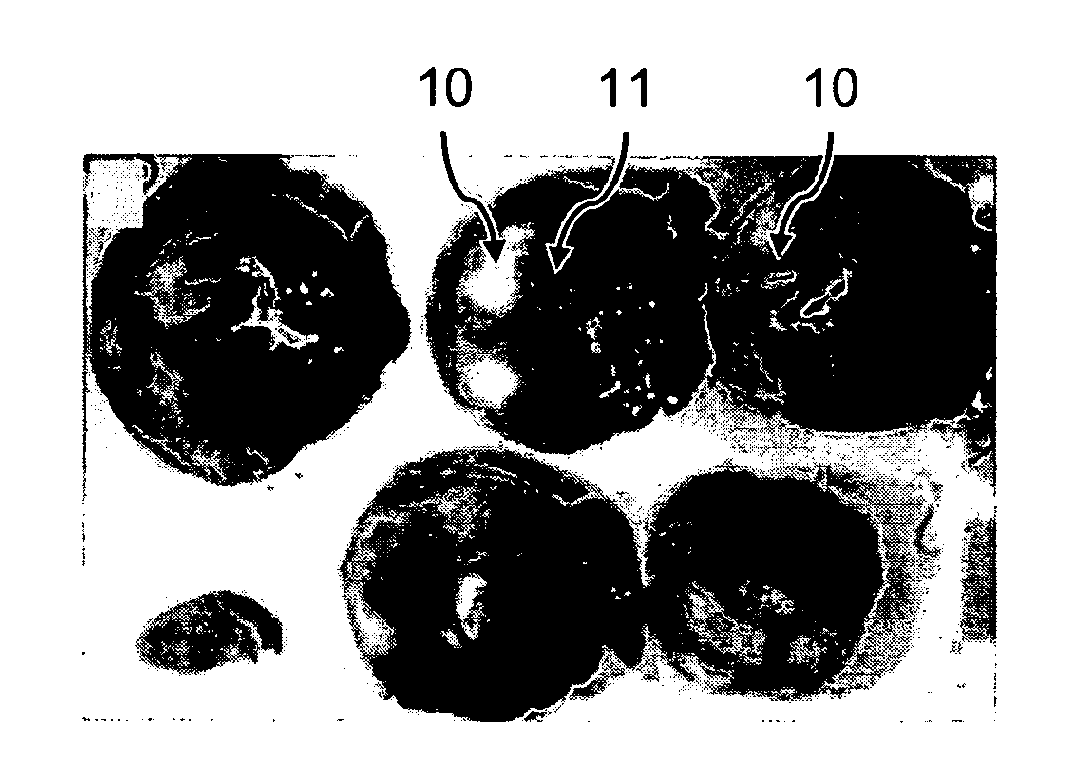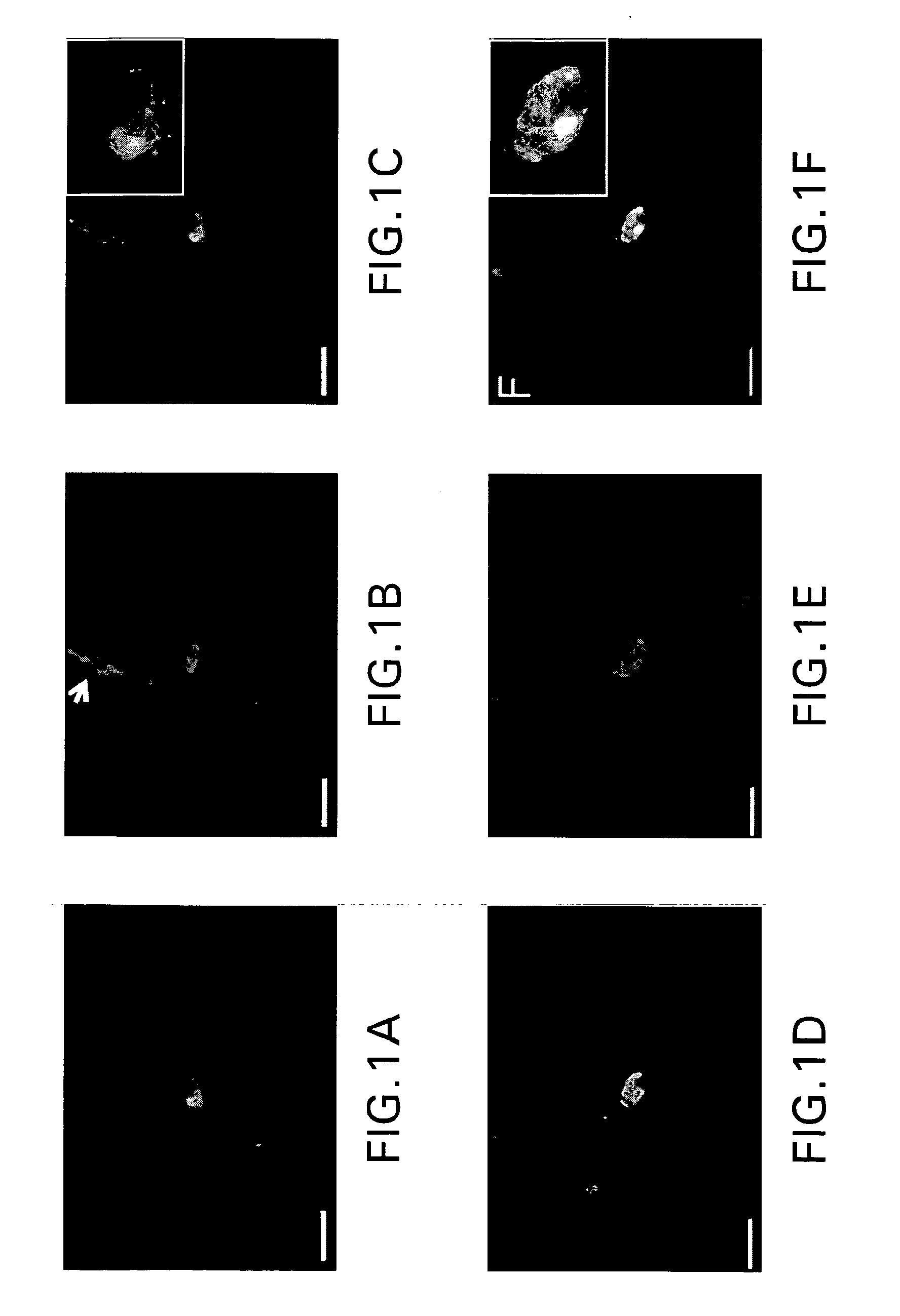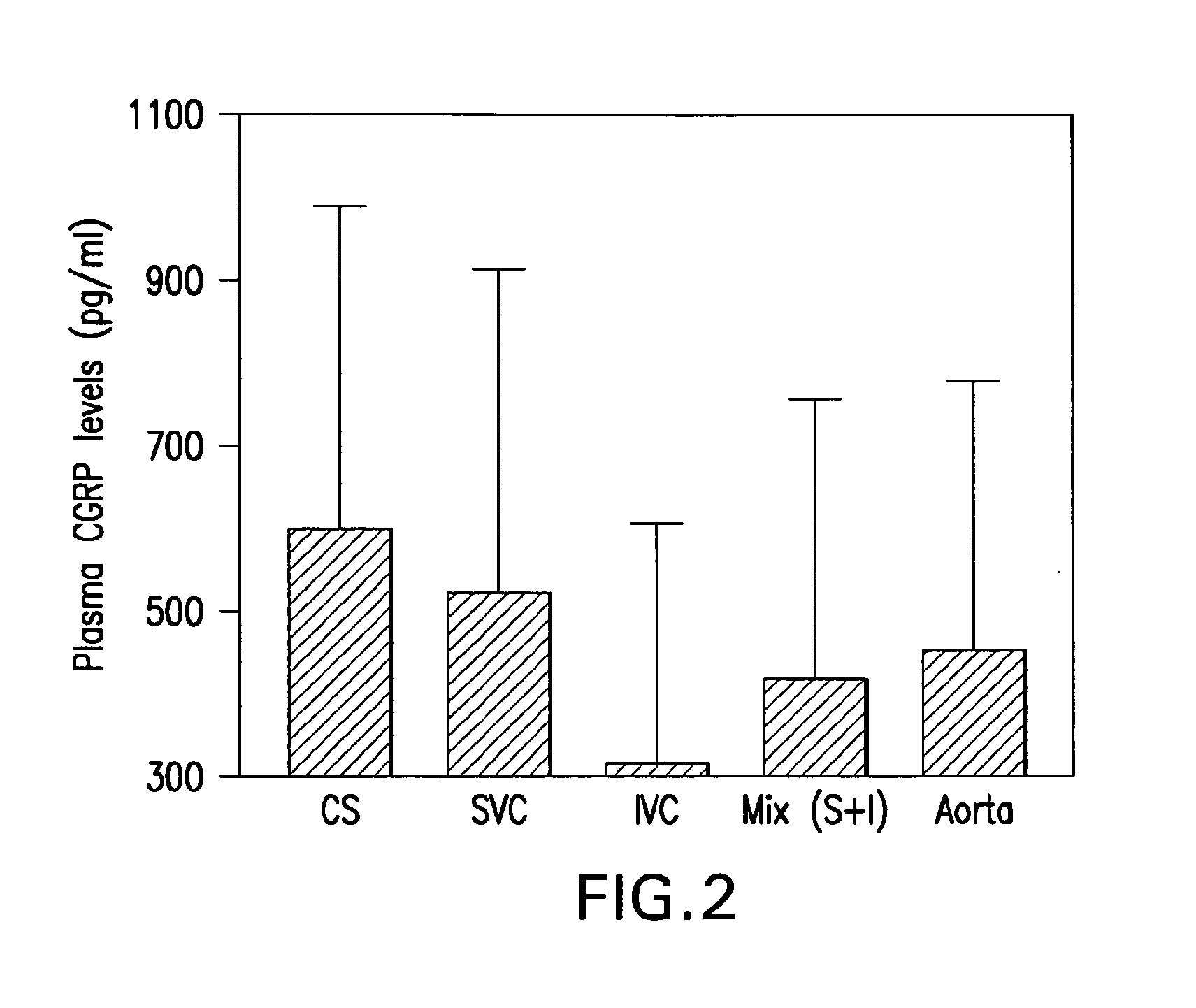Methods and Compositions for Treatment of Reperfusion Injury and other Cardiac Conditions
a technology for reperfusion injury and other cardiac conditions, applied in the field of biomedicine, cardiology, can solve the problems of unresolved clinical problems, no drug clinically available that can be given, and difficult translation to the clinical arena, so as to reduce the risk of reperfusion injury, facilitate functional recovery, and reduce the effect of reperfusion injury
- Summary
- Abstract
- Description
- Claims
- Application Information
AI Technical Summary
Benefits of technology
Problems solved by technology
Method used
Image
Examples
example 1
Immunohistochemical Identification of CGRP and CGRP mRNA in Human Intrinsic Cardiac Adrenergic Cells
[0129]Immunohistochemical study coupled with in situ hybridization technique was performed in surgically discarded left ventricular tissues from human hearts. It was observed that the intrinsic cardiac adrenergic cells expressed calcitonin-gene related peptide immunoreactivity and expressed calcitonin-gene related peptide mRNA in situ in human left ventricular tissue (FIG. 1A-1F). While sympathetic nerve endings were frequently identified, no CGRP-containing sensory nerve endings were identified in the left ventricular myocardium.
example 2
CGRP Release from Intrinisic Cardiac Adrenergic Cells in Human Heart
[0130]Human heart is innervated by calcitonin-gene related peptide-containing afferent nerves primarily supplying epicardial coronary arteries. The transplanted human heart remains calcitonin-gene related peptide-afferent nerve denervated up to 63 months post-transplantation (Wharton, 1990), thereby lacking nerve-derived calcitonin-gene related peptide. Without afferent nerve innervation, the intrinsic cardiac adrenergic cells can independently release calcitonin-gene related peptide in human heart. It was observed herein that intrinsic cardiac adrenergic cells spilled over significantly high amount of calcitonin-gene related peptide intracardiacally than those in the central veins and aorta (FIG. 2). This indicates that intrinsic cardiac adrenergic cells constitute a primary source for cardiac calcitonin-gene related peptide synthesis and release independent of afferent nerve innervation.
example 3
Regulation of CGRP Gene-Expression and Release in Intrinsic Cardiac Adrenergic
[0131]The present invention also demonstrated that δ-opioid agonist DPDE and β2-adrenergic receptor agonist, epinephrine upregulate calcitonin-gene related peptide gene expression in rat intrinsic cardiac adrenergic cells (FIG. 3). While δ-opioid agonist modestly increases calcitonin-gene related peptide mRNA levels, epinephrine is a very potent stimulant increasing calcitonin-gene related peptide mRNA levels by 14 fold. This robust gene regulatory effect lasted for 24 hrs following a brief 60-min of epinephrine treatment.
[0132]Consistent with calcitonin-gene related peptide gene upregulation by δ-opioid agonist, i.v. infusion of DPDPE increases circulating calcitonin-gene related peptide levels by 2 fold presumably due to increased cardiac calcitoningene related peptide spillover from intrinsic cardiac adrenergic cells (FIG. 4).
[0133]Treatment of cultured rat ICA cells with epinephrine (1 μml / L for 1 hr),...
PUM
| Property | Measurement | Unit |
|---|---|---|
| Time | aaaaa | aaaaa |
| Dimensionless property | aaaaa | aaaaa |
| Dimensionless property | aaaaa | aaaaa |
Abstract
Description
Claims
Application Information
 Login to view more
Login to view more - R&D Engineer
- R&D Manager
- IP Professional
- Industry Leading Data Capabilities
- Powerful AI technology
- Patent DNA Extraction
Browse by: Latest US Patents, China's latest patents, Technical Efficacy Thesaurus, Application Domain, Technology Topic.
© 2024 PatSnap. All rights reserved.Legal|Privacy policy|Modern Slavery Act Transparency Statement|Sitemap



